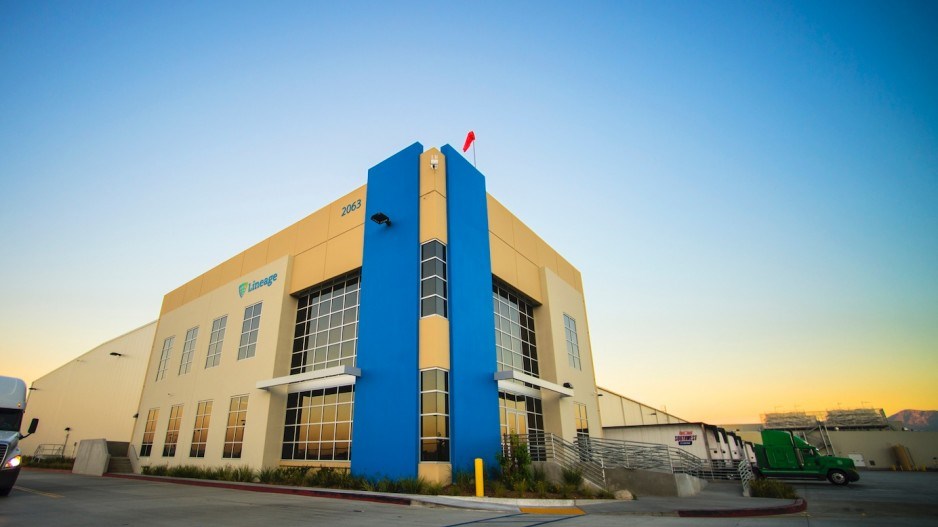This September investment giant Oxford Properties Group paid US$360 million for a stake in Lineage Logistics, the world’s largest provider of cold storage facilities. It was Oxford’s first investment in storage real estate and an indication of the rising tailwinds of an under-respected sector of the industrial real estate market.
Oxford is not the only big player attracted. SmartCentres Real Estate Investment Trust is currently partnering with SmartStop Self Storage to build out a self-storage portfolio worth an estimated $200 million.
It is estimated that Canada’s self-storage industry could see growth of 5.3% by 2027, paralleling demand in the U.S. But this pales in comparison with the need for storage from businesses.
Avison Young has noted the pandemic increased interest in industrial properties across B.C., with much of it related to storage space.
“Industrial assets, particularly those related to logistics, distribution and last-mile warehousing, were already in high demand due to shoppers’ ongoing embrace of e-commerce, but the arrival of COVID-19 triggered an even more rapid shift in consumer shopping patterns, further driving demand,” the commercial agency noted in its mid-year 2020 B.C. Investment Review.
Demand for certain goods during the pandemic increased substantially, which boosted the fortunes of many manufacturers, the report noted. Some retailers found they required additional industrial space to support online sales operations, and for storage after stores were closed during the provincewide lockdown.
The problem now is how to handle the increased storage demand.
“There is nowhere to put it all,” explained Chris MacCauley, senior vice-president of CBRE in Vancouver, adding that stock-piled inventory ranges from new cars to spring fashions and office furniture, plus the growing need to warehouse perishable consumer goods.
“The cold-storage sector has highly favorable tailwinds via a combination of population growth, a growing consumer preference for fresh food and the continued adoption of e-commerce in the grocery sector, which has accelerated due to the current pandemic. As a result, the value of the [North American] cold storage market is forecast to grow 13% annually reaching $275 billion by 2024,” said Kevin Egan, head of investments, North America, at Oxford Properties
Self-storage
While large investors are now piling into industrial storage, smaller players have long recognized the inherent strength of the less flashy self-storage sector, where returns can be higher and risks lower than in other commercial real estate.
“While the dusty [and musty] self-storage units are commonplace in the market, there is an opportunity to provide high value and utility to clients. By investing in the right location that offers some extra services, self-storage properties can generate a solid return to the investor,” said Arthur Klein, a business broker and mergers and acquisition advisor with Smythe LLP Advisory Services of Vancouver.
“Due to the lower-risk profile from recurring rental income, the returns from self-storage facilities may be lower than most operating businesses; however, investors still look for cash-on-cash returns of 20%,” Klein said in an exclusive report on the sector for Western Investor.
Klein notes that option of being able to adjust rental rates as based on both the term of the agreement and on the size and location of the facility is a further advantage.
“This provides the operator flexibility in how it manages this space over traditional commercial leases where leased area, rate and terms are often defined (fixed) for long periods,” he said.
For self-storage sites, location will be critical to its client base – with most clients located within a 15-minute drive to the facility. Clients will also be willing to pay more for facilities with 24/7 access, enhanced security and ancillary services such as shipping and packaging, Klein added.
Most investors will also try to seek new locations that have lower site and development costs. As well, optimal markets are where storage capacity is 2.5 to 3.5 square feet per person of population, he noted.
Klein’s trends and opportunities that will help realize higher rental rates on self-storage assets also include:
•Flexible or smaller sized units;
•Growth in secondary markets as people move and down-size to retirement or lifestyle communities;
•Partnership with multi-family residential developers to cross-market external storage options;
•Container systems that allow for automated retrieval and maximal space usage; and
•Valet services, where commonly stored and accessed items can be made available at "curb-side" allowing the customer to ‘grab and go’ with convenience.




